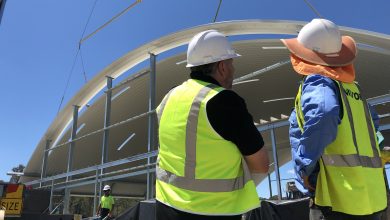Organisation the key for collaborative, calm teaching

Any professional role requires a modicum of organisational prowess to manage the multiplicity of tasks; communications, schedules, updates, and those time-sucking memos that characterise operations in many an industry.
Let us all pause for a moment to pay tribute to those in the education industry, yourselves, educators. These incredible (possibly super-human) beings manage that dizzying list of tasks, obligations and interruptions with up to thirty-five students chattering, emoting, and needing things…
Teacher organisation is at the heart of what separates the self-assured smooth operator from the mere mortality of a fraught teacher.
In early primary years, a wonderful opportunity exists for teachers to model organisational skills in the context of daily operational and personal task. Daily and weekly planners can enhance the teacher’s ability to institutionalise this rhythmic programme of achievements, from the simple daily task of placing bags on hooks, to a set of reading objectives, prominently displayed.
High school years herald an increased work load, with assessment schedules that can threaten to cave in on a disorganised teenaged learner. An opportunity exists for secondary teachers to transfer solid self-management skills and attitudes to students, who will ultimately emerge into a frenetic and fast-paced industrial landscape.
Organisation follows the oxygen mask principle; teachers can only assist students if their own feet are free from the chaotic quagmire of unmet tasks.
Daily planners are more than just a place to record your appointments. Planners can be specifically geared towards primary or secondary teachers, allowing you to stay on top of class activities, student records, and learning outcomes in one daily planner.
Choose a planner geared to teachers, a good planner will include features such as blank timetables, must do activities, space to list meetings and duties, attendance records, a section for student notes and even a seating plan. Products will come in daily and weekly versions, and you can streamline everything required into one binder.
Team-teaching, as recommended by education experts such as John Hattie, and Field Rickards of the Melbourne Graduate School or Education, can be supported by collaborative planning. All teachers will be aware that teacher-trainers recommend establishing a long term plan and then plotting key milestones on a planner.
Most organised teachers use a combination of digital and paper organisational tools, to maintain collaboration with colleagues and keep their heads together, when 30 eyes are watching them, expectantly.
But what about planning curriculum?
The news and social media is abuzz with references to the stress of NAPLAN for students, but also for teachers. Specific preparation requirements must be implemented by teachers all over Australia. Primary and secondary schools play a central role in ensuring the smooth running of NAPLAN tests.
When Professor John Hattie synthesised over 800,000 research papers related to student achievement in his meta-study, published in his 2009 book: Visible Learning, he found that practice tests had only a small effect on students’ subsequent results.
There is far more involved in NAPLAN preparation than just running tests; teachers must identify gaps in student knowledge and adjust lessons to meet desired outcomes. As with general teaching, being organised can completely transform the preparation phase for teachers and their students.
Organising educational requirements with a curriculum organiser can address the growing number of non-teaching tasks teachers are expected to complete.
These web-based programs allow teachers access to Australian Curriculum compliant resources, and organise their documents online.
There’s a general shift towards centralised electronic school management systems in schools, and a benefit of this is collaborative platform conducive to this concept of ‘team-teaching’ so enthusiastically encouraged by celebrated thinkers such as Professor John Hattie and Dean Field Rickards.
If schools are to become the collaborative learning environments that these visionaries predict, leaders must take a whole school approach to coordinating their curriculum development and planning.







